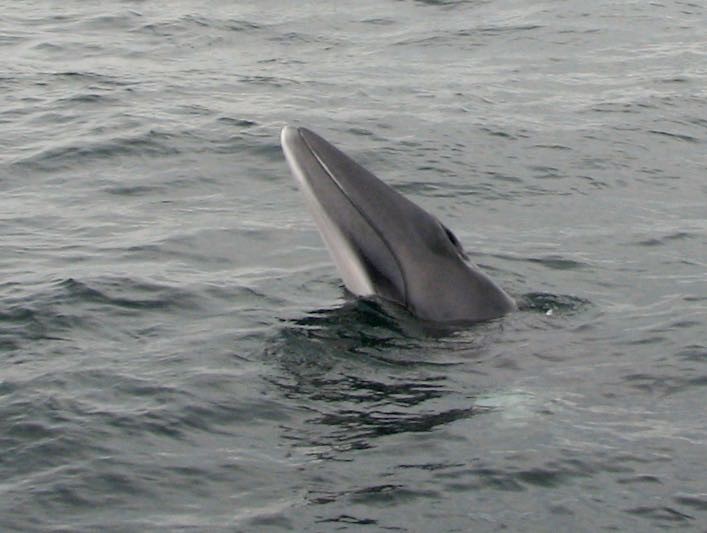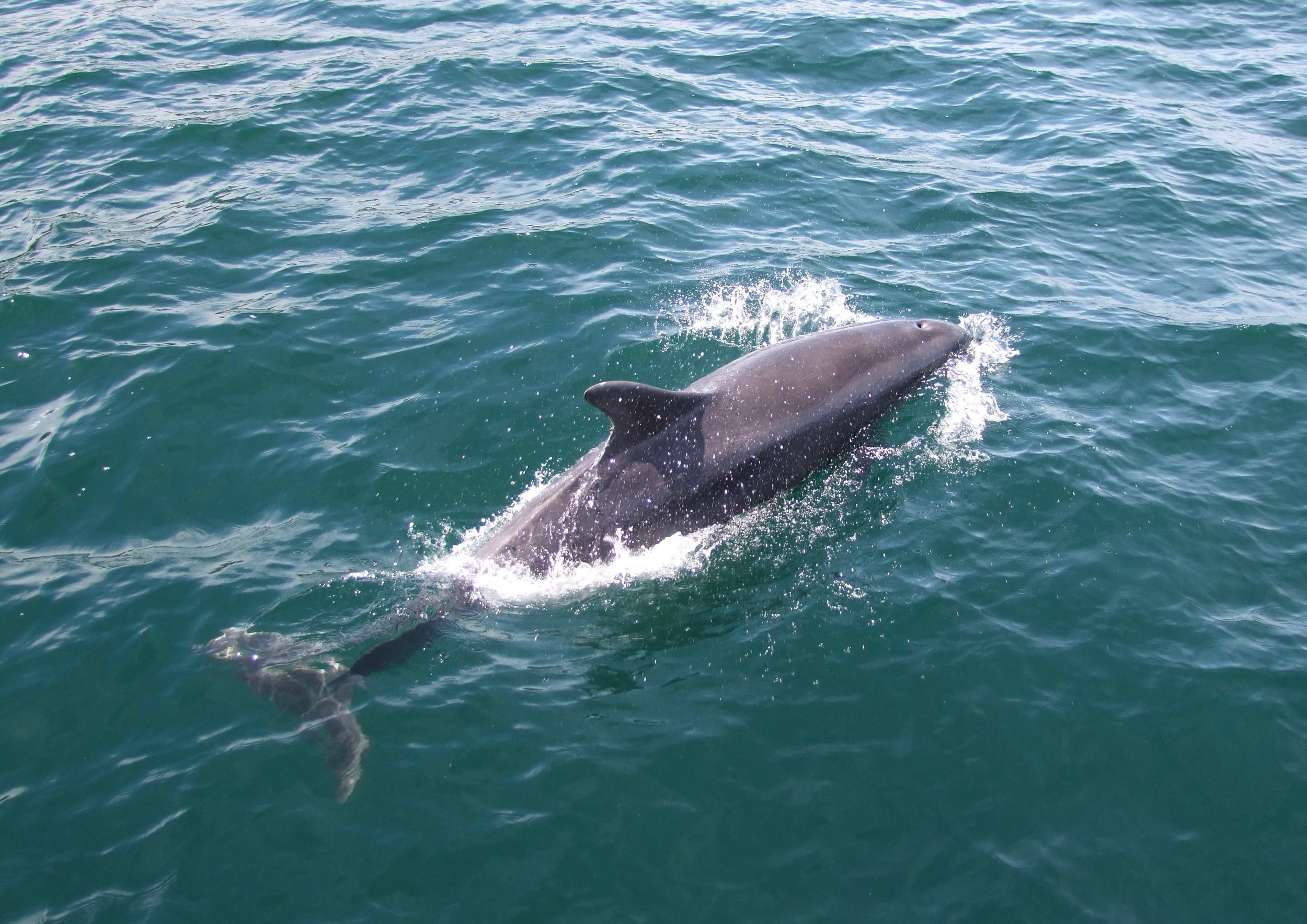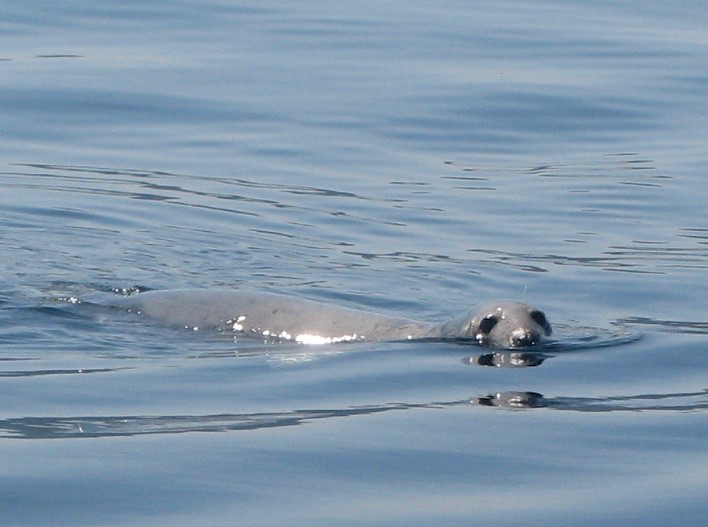Tales from the Trail: Isle of Rum
Kilmory Beach with the Skye Cuillins in the background
Join us for our weekly blog as we share experiences from sites along the Hebridean Whale Trail - this week Trudi, the Ranger on the Isle of Rum, shares her wildlife experiences on Rum and some useful information about the site.
Rum is the jewel of the Inner Hebrides: a wild island, which has been a National Nature Reserve since 1957, making it a haven for wildlife.
Minke whale, common dolphin, bottlenose dolphin, harbour porpoise, otter, grey seal and harbour seal can be seen around the shores all through the spring and summer. They are joined in late summer by the majestic basking shark. If you’re really lucky you may spot Risso’s dolphin, orca, sunfish and leatherback turtle!
Rum is well known for its huge colony of Manx shearwater – 23% of the entire world population of this species nests in burrows in the peaks of the Rum Cuillin: that’s over 150,000 pairs! These birds only fly in to their burrows at night, when there are fewer predators about, and the noise is overwhelming: truly one of nature’s wildlife spectacles! During the day they are often seen out at sea, weaving their undulating flights above the waves. By autumn they have all disappeared down to the southern hemisphere, artfully leaving winter behind them.
The mountains of Rum
Golden and white-tailed eagle, raven, hooded crow, hen harrier, merlin, oystercatcher, curlew, greylag, common gull, red breasted merganser, black guillemot and eider are here all year; joined in the breeding season by peregrine falcon, red throated diver, greenshank, common sandpiper, lapwing and golden plover.
Seabirds you may encounter include razorbill, guillemot, great skua, fulmar, kittiwake, arctic and common tern and shag.
The woodlands around Kinloch Village are home to woodcock and a great many songbirds in the breeding season, including cuckoo, coal tit, goldcrest, goldfinch, willow warbler, spotted flycatcher, chiffchaff, blackcap, song thrush and mistle thrush. The open moorland and blanket bog support red grouse, meadow pipit, wheatear, snipe and stonechat, in addition to common lizard, palmate newt and all five of Britain’s native carnivorous plants: three species of sundew and two of butterwort.
We are midge-free from October to May, but also minke-free too, as the minke whales leave our seas over winter.
Red deer are often seen around the village, only disappearing briefly for the rut from September to November. Seals and otters come closer to the village from November to April, possibly due to there being fewer people about. Iceland gull and great northern diver are often seen in winter and spring, in addition to flocks of redwing around Kinloch Village and flocks of twite and snow bunting further up the glens.
The Otter Hide is a great place to sit back and enjoy the view
Whale Trail: The Rum Otter Hide can be reached in a ten-minute walk on a good footpath through a beautiful woodland full of croft ruins and songbirds. The Hide has both glazed and un-glazed windows, with seats and benches to sit on. There are sightings diaries going back to 2015, a handmade laminated guide to the wildlife you may see, and a bird ID book, in addition to ID posters for cetaceans & seals.
The latest cetacean sighting was 9th July 2019: two porpoise were feeding inside the bay, just 400m from the Hide! Previous highlights include Minke whale, porpoise, bottlenose dolphin, grey and harbour seal, otter, white-tailed eagle, peregrine falcon, red throated diver, hen harrier and great northern diver.
Kinloch Village has a grocery shop and Post Office open all year round and a café: Kim’s Kitchen, open March/April to October (and able to cater on request to winter visitors).
Visitor accommodation includes a Bunkhouse, camping cabins, the Harbour Hut BBQ Cabin, Ivy Cottage Guest House and a campsite with toilets and showers.
Calmac ferries run from Mallaig 5 days a week in the summer and 4 days a week in the winter. The MV Sheerwater from Arisaig runs every Tuesday and Thursday between April and September.
The Isle of Rum Ranger Service runs a wildlife-watching boat trip every Thursday on the MV Sheerwater – a chance to get out on the open sea!
More details of transport and facilities can be found on our website.
START YOUR OWN ADVENTURE ALONG THE HEBRIDEAN WHALE TRAIL TODAY…






